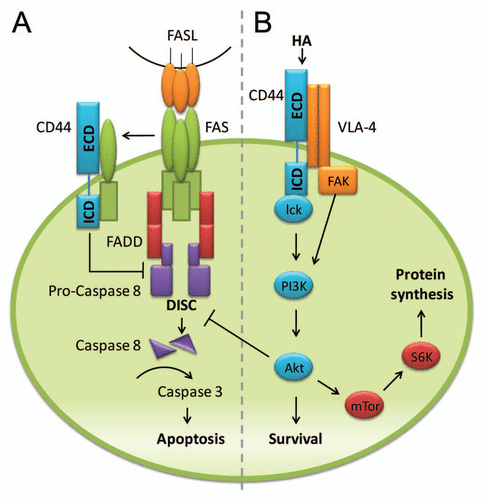Figures & data
Figure 1 Potential mechanisms by which CD44 can modulate cell death. (A) CD44 may inhibit apoptosis by sequestering FAS and thereby preventing assembly of death-inducing signaling complex (DISC). Without DISC formation, Fas ligand (FasL) cannot engage FAS, which precludes downstream activation of caspases that would lead to apoptosis. (B) Ligation of CD44 (e.g., through HA) can facilitate aggregation of CD44-integrin-kinase signaling components in lipid rafts. Src family kinases, such as Lck, associate with the cytoplasmic tail of CD44 and activate the PI3K/Akt signaling pathway. Alternatively, binding of either CD44 or VLA-4, which form a heterodimer at the cell surface, could activate PI3K through FAK. Activation of PI3K/Akt is associated with cell survival. Akt can inhibit Fas-mediated CD4 T-cell death by interfering with DISC assembly. In addition, the mTOR pathway may be engaged to support the survival and expansion of T cells.
